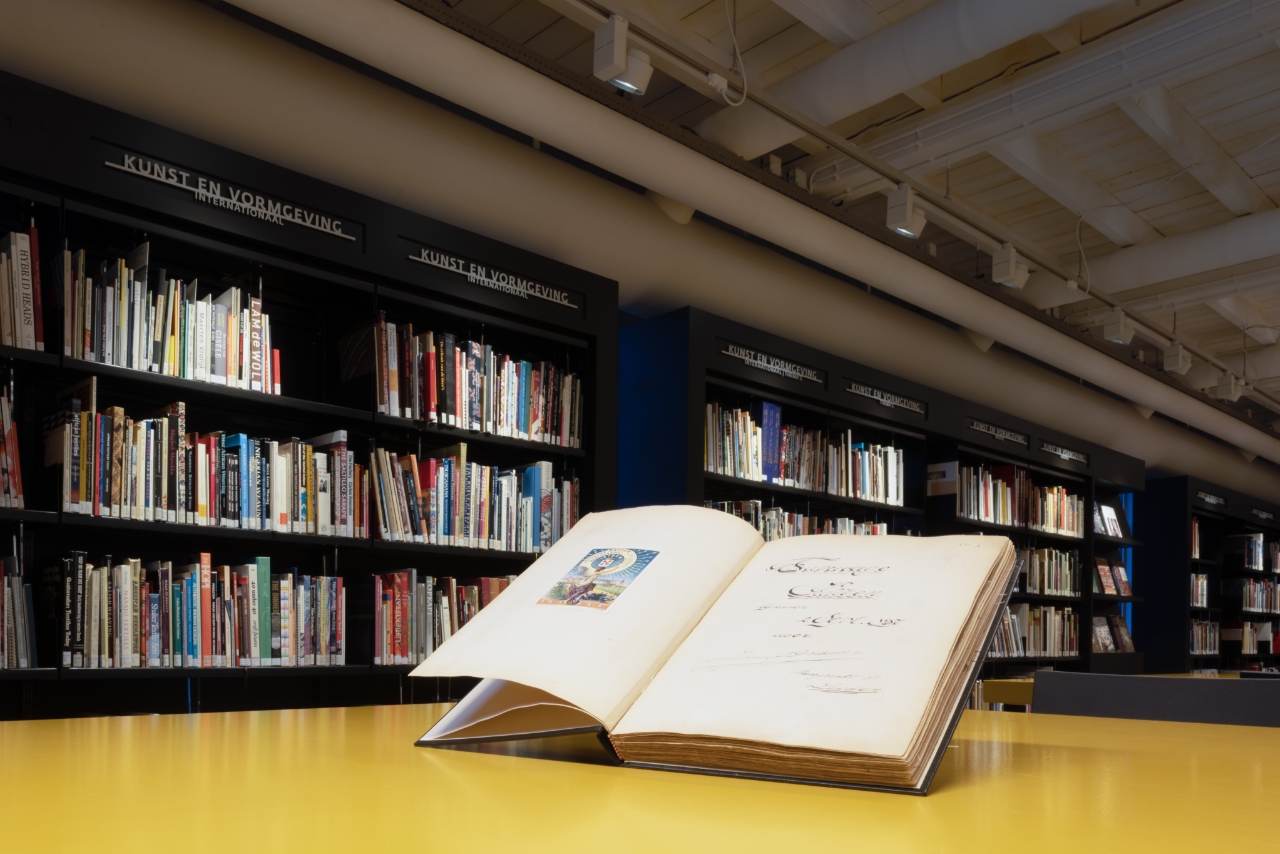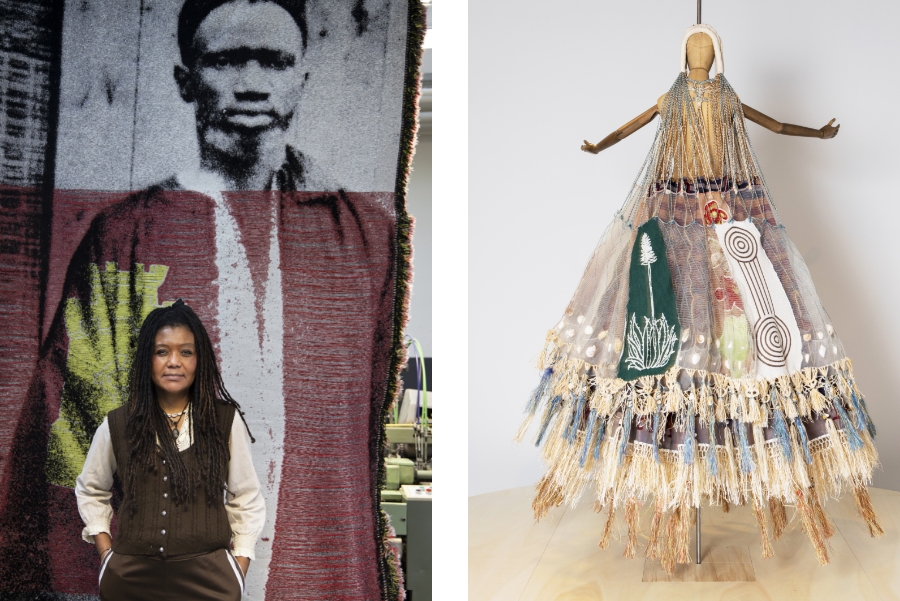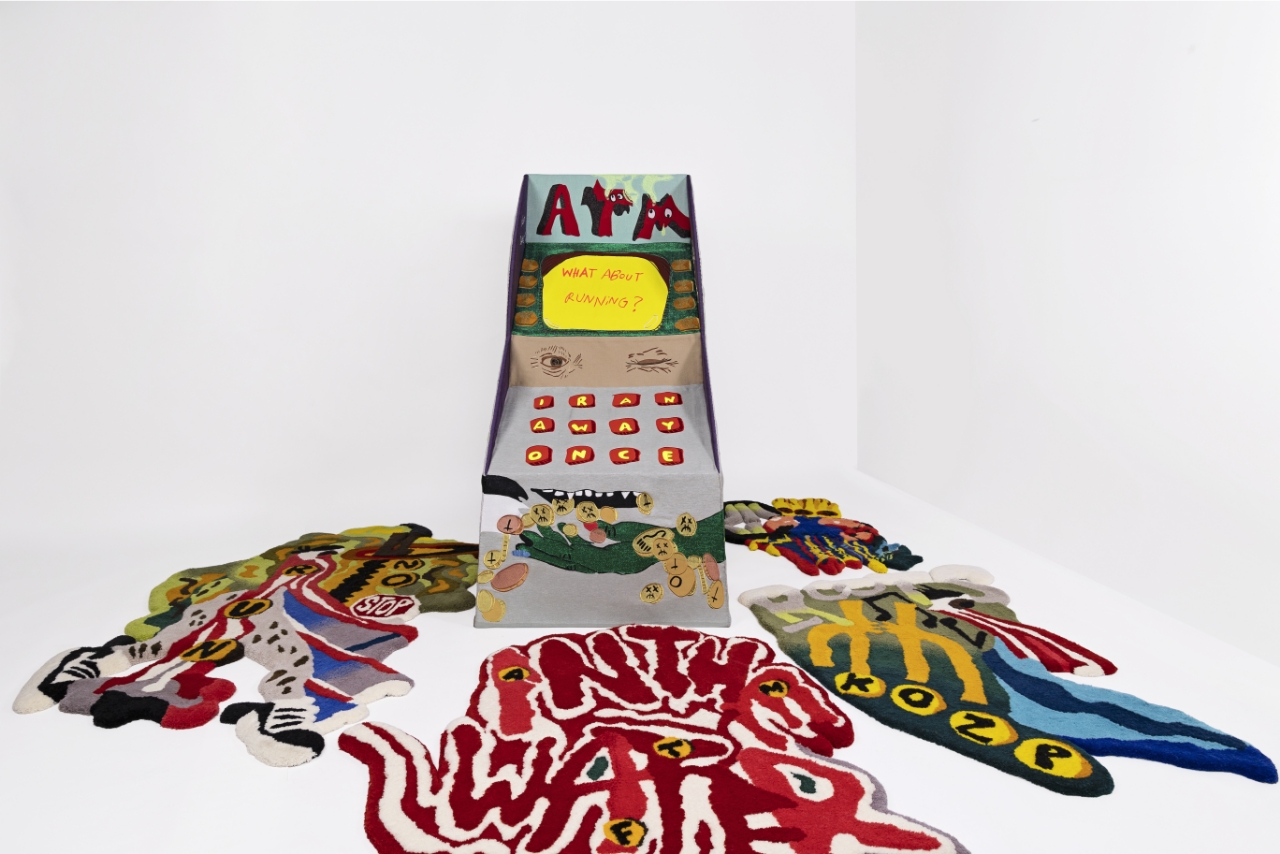In the TextielLab, work is not only developed for makers but for the TextielMuseum as well. The museum collection is regularly refreshed and expanded with so-called ‘collection commissions’. Artists can use all the lab’s facilities to create these special pieces.
The TextielMuseum collection was established in the late 1950s, when the Driessen collection was bought from the Leidsche Cotton Company. The sample books are filled with fabrics printed with batik patterns, in which the company specialised. Seventy years later, the museum believes the time is ripe to re-examine the story behind the fabrics. That’s because the original batiks were mechanically reproduced here to be sold in the country they came from. “Making money by copying other people’s cultural heritage is something we are once again looking at critically,” says head of the collection and curator Sjouk Hoitsma. She adds that an application has just been submitted to the Mondriaan Fund for three new commissioned works around this theme.

Sample book from the Driessen collection, you can find this in the library. Photo: Cees de Jonge
Relevant stories
Collection commissions form an important link between the museum and the lab. The resulting works of art are not only exhibited in the museum but also included in the permanent museum collection. Three or four artists are commissioned once every two years to create works focused on topics that deserve attention. “We consciously choose topics that are under-explored in the existing collection or that address current social themes,” says Hoitsma. “We want to tell relevant stories through textiles.”
Decolonial
Compared to the commissions that the museum grants for specific projects and exhibitions, there is a broader cultural-historical or technical story behind the collection commissions. For example, an important theme in the most recent commissions is the legacy of colonialism. To this end, the museum approaches artists who, based on their oeuvre, can be expected to make a significant contribution to the topic. Experience with knitting, weaving or any of the other techniques in the lab is not a requirement. For instance, this year Patricia Kaersenhout, who had no weaving experience, developed tapestries that seek recognition for the victims of colonial malpractice. And artist duo Alydia Wever and Ryan Oduber delved into knitting for their collection piece. They developed a layered dress that represents the search for identity and connection from the perspective of their Aruban roots.

Patricia Kaersenhout and her work, on display at the Textile Now exhibition. / The collection piece by Alydia Wever and Ryan Oduber for the TextielMuseum. Photos: Josefina Eikenaar.
“As a museum, we want to look critically at our own roots.”
Gender
Another topical theme is gender and identity. Says Hoitsma: “In the ‘60s and ‘70s, mainly female artists chose the medium of textiles. But their work was not seen as a full-fledged art form at the time. Fortunately, that has now changed.” The TextielMuseum is one of the few museums that does not have a gender gap in its collection but is more concerned with emancipation. In recent years, we have increasingly focused on broadening the collection to include a more diverse understanding of gender, which goes beyond the binary of woman and man. This can be seen, among others, in the commissioned works by Geo Wyex and Ada M. Patterson. For example, Patterson is currently working on an installation on the knitting machines in the TextielLab. In this work, she poetically explores the potential and beauty in the transformations that sea creatures undergo, as an analogy for the changing transgender body.

Geo Wyex’s collection commission, on display at the Textile Now exhibition. Photo: Josefina Eikenaar
Technical innovation
In addition to the social themes mentioned, technical innovation is also a selection criterion for this type of commission. Hoitsma highlights the multi-year project with DRIFT, in which artists and product developers are experimenting together with building with textiles. The resulting installation can be seen in the museum from 14 October in the exhibition Is it alive? This led to a subsequent project on weaving with metal. The material research that Asli Hatipoglu is conducting in the lab until the end of the year is also an example of technical innovation. “These research commissions challenge the lab team to push the boundaries of materials and techniques,” says Hoitsma.
“The minds and hands of the people in the lab become the artist’s tools.”
Sweet shop
Artists who accept the commission are given time in the lab to develop their work, assisted by a product developer and guided by a curator. They can draw on the rich museum collection and the largest textile library in Europe. Says Hoitsma: “The development time gives you the opportunity to use all the possibilities of the TextielLab and the TextielMuseum. It’s like being in a sweet shop. In addition to the wide range of materials and techniques, you also get access to the minds and hands of the people in the lab, which in fact become your tools.” Letting go of the actual production can be quite difficult in the beginning, Hoitsma knows from experience: “Programming the machines is a complex process. You have to rely on the knowledge of the product developer, without immediately seeing why. But after a while, the most beautiful things emerge from that interaction.”